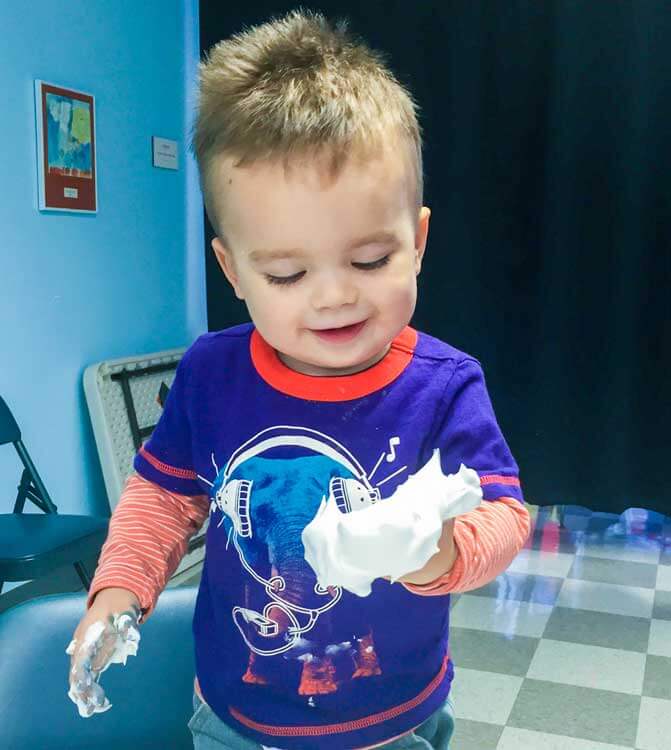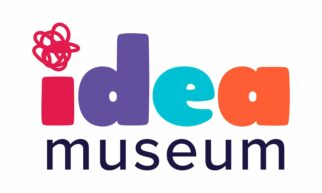
Museum activities and exhibitions focus on three key pillars: supporting early learning, nurturing creative thinking and engaging families. We also believe in creating opportunities for children of all ages and backgrounds to experience new ways of seeing their world is essential for making our diverse community the best it can be.
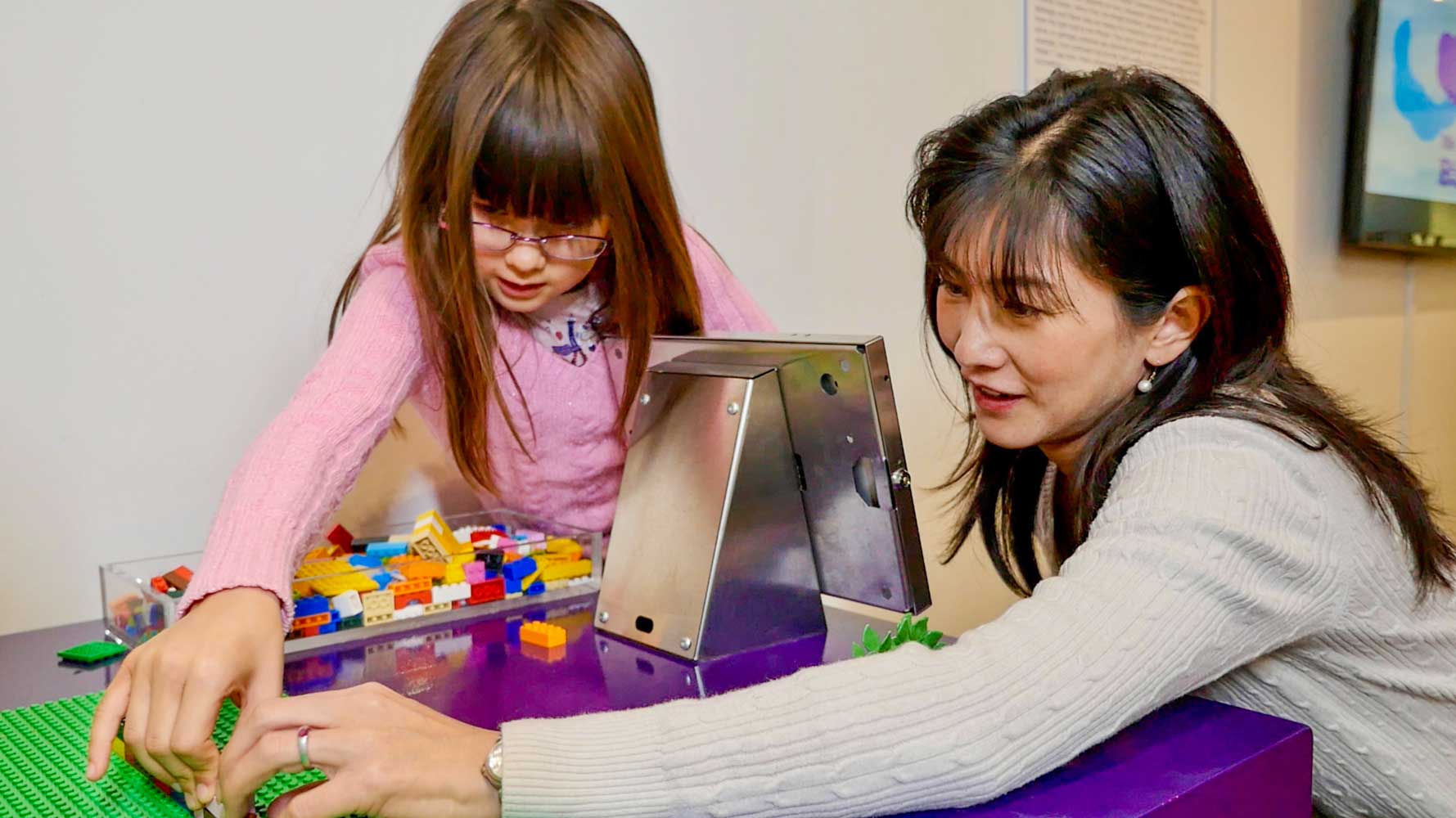
Supporting Early Learning
Your gift helps support a child’s development by viewing and learning about artworks by professional artists, and experiencing and creating art of their own. Your generosity is essential and helps children develop gross and fine motor skills, build their vocabulary and ability to read, reach key developmental milestones, and begin to show self-expression. It also allows them to explore other cultures, viewpoints and STEAM concepts.
Myth: Art isn’t important for preschoolers.
Fact: About 90 percent of brain development occurs by age 5. Art factors significantly in language development, motor skills and problem solving.
“My daughter (Hana) grew up at the idea Museum. I’m thankful for all of the early learning experiences she received here—the museum is a special place for our family.” – Mayumi Gerstberger, Mom of Hana & Hayden
Resources/ Articles
Edutopia: Why Arts Education is Crucial
Harvard University: The Science of Early Childhood Development
Nurturing Creative Thinking
No matter what vocation they pursue, your financial gift will help our young guests to nurture their ability to think creatively. You will help foster their curiosity and natural inclination to experiment and explore to support and develop their problem-solving skills – and that’s not limited to our youngest guests.
Myth: Creativity comes naturally.
Fact: Student creativity is on the decline. Nurturing of this type is essential, as employers say creativity is the top skill they seek.
“This program inspires students to explore creative solutions to real-world problems. Every day, Boeing employees engage in creative problem-solving.” – Mary Baldwin, Boeing
Resources/ Articles
Huffington Post: Importance of STEAM Learning
Forbes: IBM Study of CEO’s – Importance of Creative Workforce
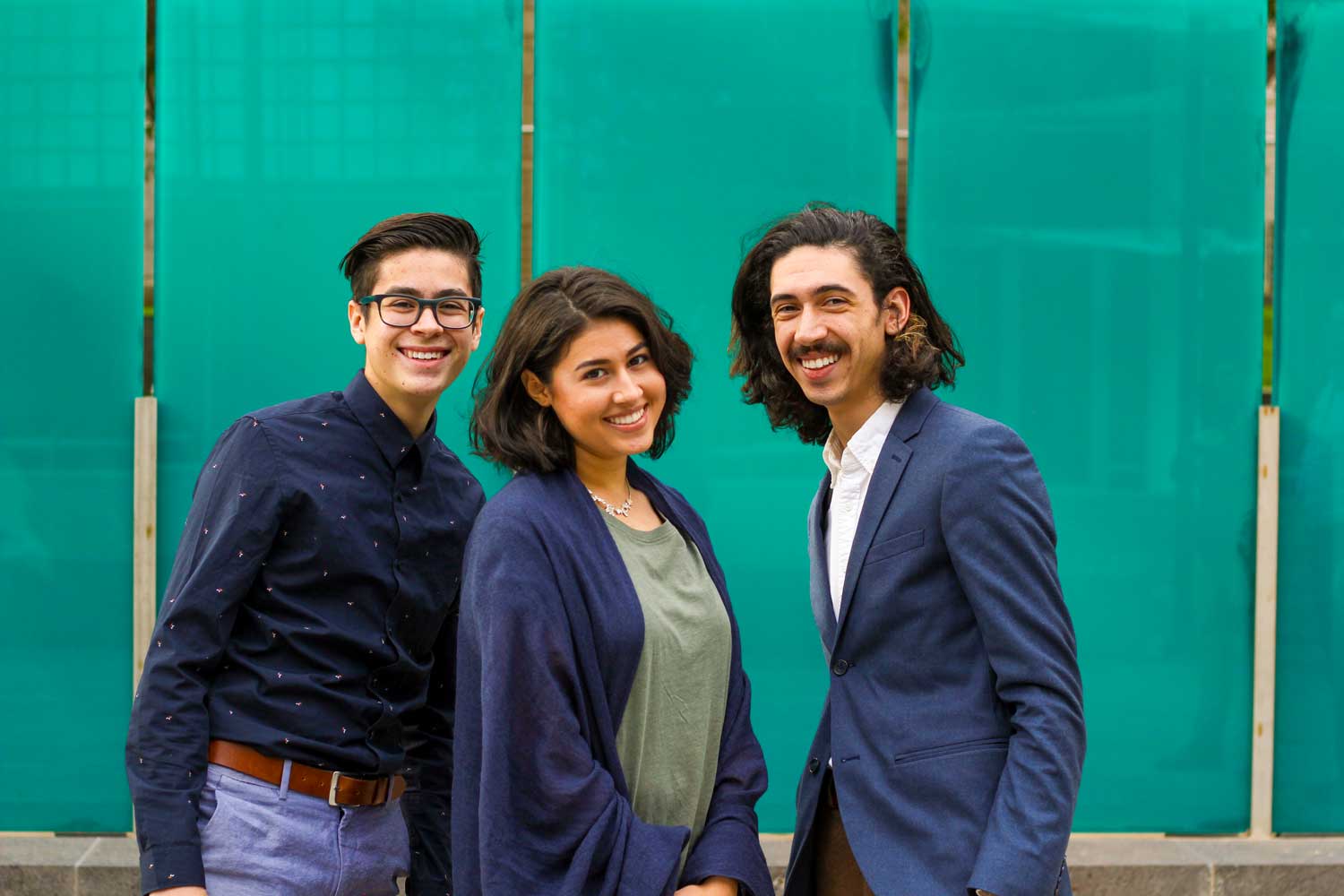
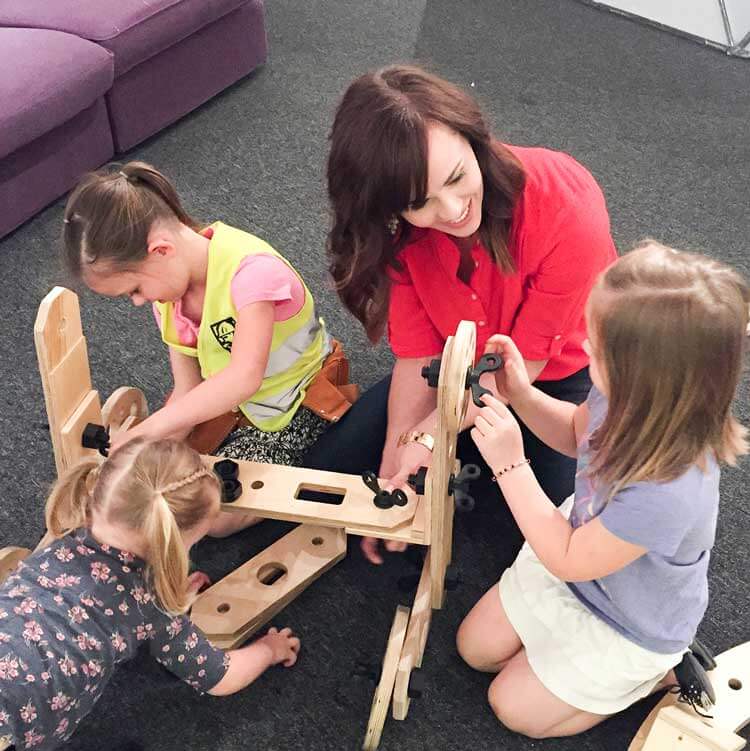
Engaging Families
Your support helps foster quality family time – an important component for the healthy development, both physically and mentally, of children. We know quality time together helps strengthens family bonds and builds lasting and shared memories. And parents want to make sure time together is well spent, especially because 60 percent of married couples with children under the age of 18 both work outside the home. We only have 936 weekends together from birth to age 18.
Myth: The museum is just for children.
Fact: It’s for all ages, and 78 percent of the museum’s adult visitors participate in activities with their children —the highest engagement in the nation.
“We learn about art and cultures and people. We create art and play games. … I can’t think of another activity in which I can simultaneously accomplish so much for my children.” – Jessica Miller, Mom of 5
Resources/Articles
Harvard University: Need for positive adult interaction in child development
The Artful Parent blog: Why Is Art Important to Families
Bureau of Labor Statistics: Percentage of dual-income parents and other family characteristics
Pew Research Center: American Family today and rise of single parent families
Providing Opportunities
Through your support, you provide opportunities for children and families (even adults with unique needs) who are at-risk, low-income, medically fragile, have a variety of physical abilities, disadvantaged and/or marginalized, to gain free or reduced access to, and the experiences of, the idea Museum. At the same time, your support allows us to continue providing the same high-quality exhibitions and interactives for all of our visitors.
Myth: All children have the opportunity to visit a museum.
Fact: Half of the population never visits a museum.*
Resources/Articles
National Endowment for the Arts: Motivations and Barriers to Why People Attend the Arts
HighScope Educational Foundation: Effects of preschool on kids in poverty
National Assembly of State Art Agencies: How Arts Benefit Student Achievement
*Source: Reach Advisors | Museums R&D 2014-2015 Year In Review
